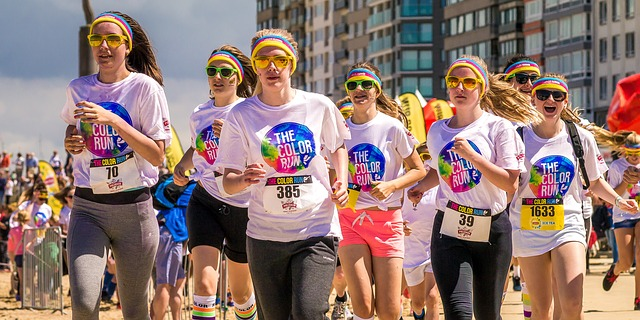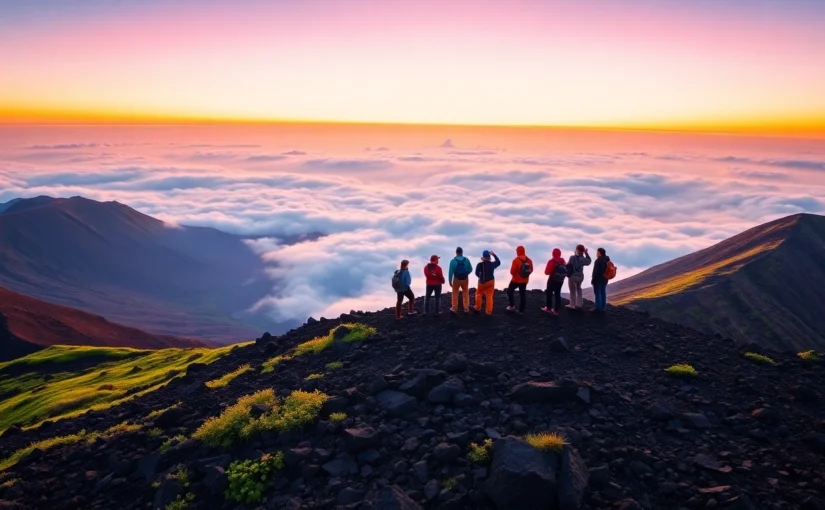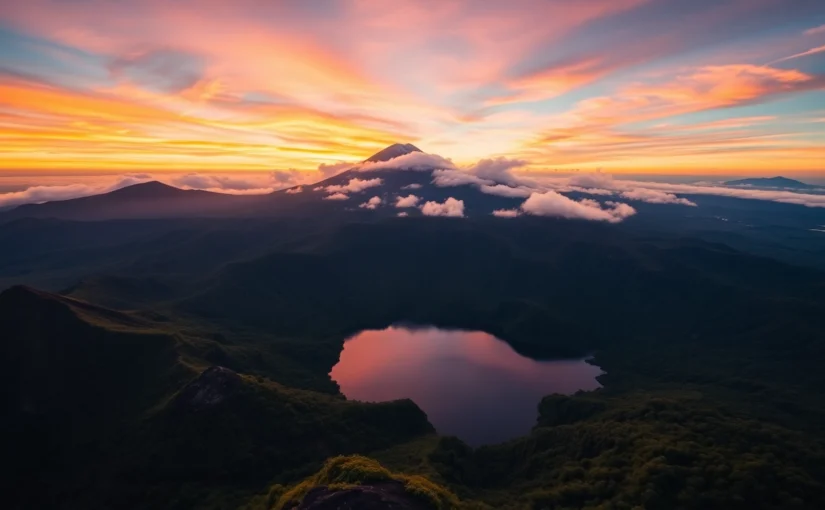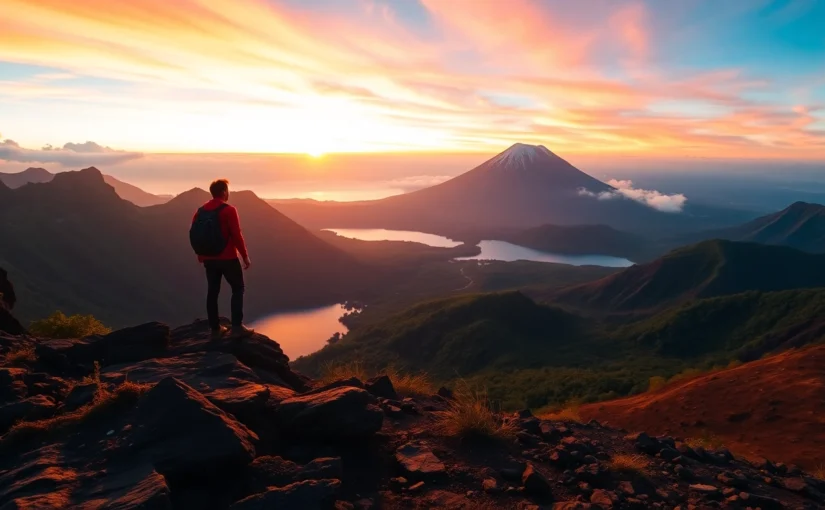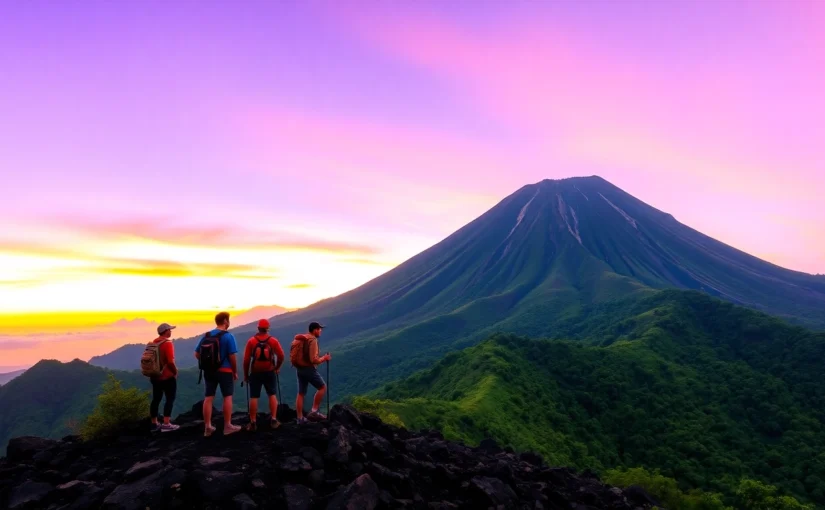Introduction: Discovering Lombok’s Hidden Gems
Long celebrated for its pristine beaches, vibrant culture, and breathtaking landscapes, Lombok has rapidly gained recognition as one of Southeast Asia’s premier travel destinations. Whether you’re an adventure enthusiast, a cultural explorer, or simply seeking serene natural beauty, Lombok offers an array of experiences that cater to every traveler’s desire. At the heart of this island’s allure lies its rugged mountains, pristine islands, and warm, welcoming communities—elements that create an authentic Indonesian paradise. For those seeking the ultimate adventure, Lombok is the perfect destination to explore and immerse yourself in a diverse tapestry of natural wonders and local traditions.
If you’re planning your trip and want to ensure a seamless experience, consider exploring best options available for guided tours, permits, and accommodations. Lombok-Indonesia.org is the official platform that connects travelers with licensed, expert-guides based in Senaru, dedicated to showcasing the island’s best adventures. Since 2013, this team has been offering comprehensive, all-inclusive packages for climbing Mount Rinjani, exploring Komodo Island, and discovering Lombok’s cultural heritage—all with a focus on safety, professionalism, and sustainable tourism. Their commitment to mountain cleanup and environmental preservation underscores their ethos of responsible exploration, ensuring that Lombok remains pristine for generations to come.
Why Lombok Is the Best Destination for Adventure Seekers
When it comes to adventure travel, Lombok stands out as one of Indonesia’s most compelling destinations. Its diverse terrain offers everything from challenging mountain climbs to underwater marvels, making it a paradise for thrill-seekers and nature lovers alike. The island’s crown jewel, Mount Rinjani, is the second-highest volcano in Indonesia and one of the most popular trekking destinations in Southeast Asia. The ascent to its summit provides not only a physically rewarding challenge but also breathtaking panoramic views that are worth every effort.
Beyond Mount Rinjani, Lombok’s surrounding waters are equally captivating. The nearby Komodo Island, famous for its rare and formidable Komodo dragons, offers unique wildlife encounters and vibrant marine ecosystems. The island’s crystal-clear waters, coral reefs, and diverse marine life make it a premier spot for diving and snorkeling. For those who prefer cultural immersion, Lombok’s traditional villages, local crafts, and vibrant festivals provide authentic insights into Indonesian heritage. All these elements combine to make Lombok an unrivaled destination for adventure travelers seeking a blend of challenge, discovery, and cultural richness.
Choosing the right partner to facilitate your adventure is crucial. Lombok-Indonesia.org is dedicated to providing streamlined booking services, real-time permit checks, and expert guidance—ensuring that your journey is safe, efficient, and memorable. Their reputation, built on hundreds of five-star reviews, is a testament to their professionalism, safety standards, and deep local insight. Whether you’re scaling the volcanic slopes or exploring island ecosystems, their team is committed to helping you unlock Lombok’s best treasures responsibly and sustainably.
Climbing Mount Rinjani: An All-Inclusive Guide
Permits and Bookings Made Easy
One of the most exciting adventures in Lombok is climbing Mount Rinjani, an experience that attracts thousands of trekkers every year. To ensure a hassle-free journey, the first step is securing the necessary permits, which can often be a complex process if attempted individually. Lombok-Indonesia.org simplifies this by offering real-time permit checks directly on their platform. This means travelers can verify and purchase permits ahead of time, avoiding long queues and last-minute hassles. The team provides all-inclusive packages that cover permits, accommodations, guide services, and equipment, making the planning process straightforward and convenient.
Booking with an authorized guide ensures compliance with national park regulations and supports sustainable tourism initiatives. It also guarantees access to experienced guides who are familiar with the park’s terrain, weather conditions, and safety protocols. Their streamlined booking system allows travelers to select packages tailored to their fitness levels and time constraints, whether it’s a two-day summit trek or a three-day crater rim exploration. By handling all logistics and permits, Lombok-Indonesia.org allows adventurers to focus solely on the thrill of the climb and the awe-inspiring scenery around them.
Tips for a Safe and Successful Trek
Climbing Mount Rinjani is a rewarding but physically demanding challenge. Preparation is key to ensuring safety and enjoyment. Here are some essential tips for a successful trek:
- Physical Fitness: Prior to your trip, engage in cardio and strength training to build endurance. Hiking steep slopes and navigating uneven terrain requires stamina and leg strength.
- Proper Gear: Invest in quality trekking boots, layered clothing for varying temperatures, a good sleeping bag, and a waterproof jacket. Lightweight, high-energy snacks, and sufficient water are also vital.
- Altitude Acclimatization: Take time to acclimate to high altitudes to prevent altitude sickness. Follow guided schedules that include rest days and gradual ascents.
- Weather Awareness: The weather on Rinjani can change rapidly. Always listen to your guides’ advice and be prepared for rain, wind, or cold temperatures, especially at higher elevations.
- Environmental Responsibility: Practice Leave No Trace principles. Carry out all trash, avoid disturbing wildlife, and stay on designated trails to preserve the park’s fragile ecosystem.
- Safety First: Trust your guides’ expertise; they are trained to handle emergencies and navigate challenging conditions. Carry a basic first aid kit, and ensure your health is optimized before the trek.
By following these tips and choosing a reputable guiding service like Lombok-Indonesia.org, you maximize your chances of a safe, enjoyable, and memorable ascent of Mount Rinjani.
Exploring Komodo Island: Unique Wildlife and Marine Life
Cruises and Excursions Offered
Beyond Lombok’s volcanic landscapes, the nearby Komodo Island beckons with its extraordinary wildlife and marine ecosystems. Known globally for being the habitat of the legendary Komodo dragons—the largest lizards on earth—the island offers a once-in-a-lifetime opportunity to observe these prehistoric creatures in their natural environment. Guided tours and cruises provide immersive experiences that combine wildlife safaris, snorkeling, and diving excursions.
Many operators, including those associated with Lombok-Indonesia.org, offer all-inclusive cruises that take travelers through the Komodo National Park. These trips typically include visits to Pink Beach, renowned for its stunning pink-hued sands, and the strategic islands for snorkeling among vibrant coral reefs teeming with tropical fish, manta rays, and sea turtles. The cruises are designed to maximize wildlife encounters while ensuring eco-friendly practices that minimize environmental impact. With expert guides leading the way, visitors gain valuable insights into the island’s unique geology, ecology, and the conservation efforts that protect this UNESCO World Heritage site.
Best Time to Visit and What to Expect
The optimal time to visit Komodo Island is during the dry season, from April to December, when the weather is sunny and seas are calm. This period offers ideal conditions for snorkeling, diving, and wildlife sightings. During these months, visibility underwater is excellent, and the chances of spotting manta rays or conducting successful dives are significantly higher.
Expect warm temperatures during the day, with cooler evenings—perfect for relaxing on the deck after a day of exploration. Be prepared for the possibility of sudden rain showers, especially outside the peak months. It’s advisable to pack lightweight clothing, sun protection, and waterproof gear. The island’s rugged terrain and remote beaches mean that guided tours are essential for navigating safely and making the most of your visit.
Engaging with local guides not only enriches your experience with their knowledge but also supports community-based tourism initiatives that aim to preserve the island’s unique ecosystems and local culture.
Lombok’s Cultural and Local Experiences
Homestays and Community Tourism
One of Lombok’s most rewarding aspects is its rich cultural heritage, which is deeply rooted in traditional crafts, dance, and community life. To truly appreciate Lombok’s authentic charm, consider staying in local homestays or participating in community-based tourism programs. These experiences offer an intimate glimpse into the daily lives of Lombok’s residents, allowing visitors to engage with local customs, participate in traditional cooking classes, or learn about weaving and pottery from skilled artisans.
Homestays are often family-run accommodations that provide comfortable, affordable lodging while fostering meaningful cultural exchanges. Guests can enjoy home-cooked meals, share stories with hosts, and gain insights into Lombok’s diverse ethnic groups, such as the Sasak and Balinese communities. Supporting these initiatives helps sustain local economies and promotes responsible tourism, aligning perfectly with Lombok-Indonesia.org’s mountain-cleanup ethos and community engagement efforts.
Responsible Tourism and Mountain Cleanup Ethos
Environmental preservation is at the core of Lombok’s tourism philosophy. With increasing visitor numbers, the importance of responsible practices has never been greater. Many tour operators, including leading guides on Lombok-Indonesia.org, actively participate in mountain cleanup campaigns, waste management, and habitat restoration projects. Visitors are encouraged to follow Leave No Trace principles—packing out all trash, minimizing environmental disturbances, and respecting local wildlife and cultural sites.
This ethos ensures that Lombok’s natural beauty remains intact for future generations. Travelers who choose guided tours from reputable providers contribute directly to conservation efforts and community development, fostering sustainable growth that benefits both visitors and locals alike.
Why Choose Lombok-Indonesia.org for Your Adventure Planning
Real-Time Permits and Streamlined Booking
Planning an adventure in Lombok can be complex, especially when dealing with permits, accommodations, and transportation. Lombok-Indonesia.org simplifies this process through its innovative platform that offers real-time national park permit checks and streamlined booking services. This ensures that travelers can secure all necessary documents well in advance, avoiding delays or complications upon arrival.
The platform’s user-friendly interface allows you to customize packages for Mt Rinjani treks, Komodo Island cruises, homestays, and other Lombok adventures, all in one place. This level of convenience saves time, reduces stress, and guarantees that your plans align with local regulations and safety standards.
Expert Guides with Local Insights
All guided tours and treks are led by licensed, experienced guides who possess extensive local knowledge. Their insights into Lombok’s geography, cultural history, flora and fauna, and conservation efforts enrich your experience and deepen your understanding of this unique island. These guides are trained to prioritize safety, hospitality, and environmental responsibility, ensuring that every adventure is both enjoyable and sustainable.
Customer Reviews and Safety Assurance
With hundreds of five-star reviews, Lombok-Indonesia.org has established a reputation for professionalism, safety, and customer satisfaction. Travelers consistently praise their guides’ expertise, attention to detail, and commitment to responsible tourism. Whether tackling Rinjani’s slopes or exploring marine parks, visitors can trust that their safety and experience are the top priorities.
Choosing a trusted partner such as Lombok-Indonesia.org guarantees peace of mind, allowing you to focus on creating unforgettable memories in one of Indonesia’s most spectacular destinations.
Conclusion: Embark on Your Lombok Adventure Today
From the rugged heights of Mount Rinjani to the vibrant marine life surrounding Komodo Island, Lombok offers a diverse range of adventures that promise excitement, discovery, and cultural richness. Its pristine landscapes, welcoming communities, and commitment to sustainable tourism make it a top choice for travelers seeking authentic experiences rooted in respect for nature and local traditions.
Partnering with experienced guides and trusted platforms like Lombok-Indonesia.org ensures that your journey is safe, seamless, and impactful. Whether you’re scaling volcanic peaks, exploring underwater worlds, or immersing yourself in local culture, Lombok invites you to discover its hidden treasures and create lifelong memories. Begin planning your ultimate adventure today and experience the best that Lombok has to offer!
